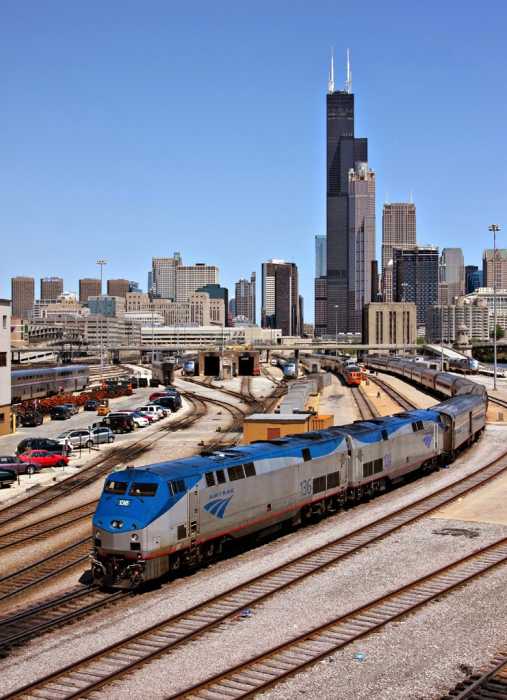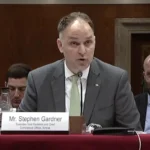Double the Frequency; Triple the Ridership.
That’s an old railroad adage that’s proven true over many years. It’s also what’s behind a plan that’s been put forward by the Midwest High-Speed RailAssociation. The person most responsible for this study and plan is Rick Harnish, executive director of the MHSRA and, not coincidentally, a member of the NARP* board of directors.
Essentially, the plan calls for additional passenger rail service along the route now covered by Amtrak’s Lakeshore Limited, which runs daily in both directions between Chicago and both Boston and New York.
The Lakeshore’s schedule is a perfect example of the inevitable problem with running one train a day: In order to have departure and arrival times that will make the train attractive to riders at each end of the route, towns and cities in between are stuck with having the train show up at inconvenient times.
For example, a business person can leave New York City on the Lakeshore at 3:40 in the afternoon, have dinner aboard the train, review notes and other materials in the comfort of a roomette, get a good night’s sleep, and arrive in Chicago at 9:45 the next morning in time for a 10:30 meeting.
Fine and dandy. But if his appointment is in Cleveland, he’ll be stepping off the train at 3:30 in the morning. And if he lives in Toledo, he’ll have to catch the Lakeshore at 2:50 a.m. to get to that meeting in Chicago. Those folks might prefer to travel by train for all the usual reasons, but obviously they will opt to fly.
What Harnish’s study and report shows is that additional trains, covering just portions of the Lakeshore’s route, can provide the right service at the right times for people in town and cities all along that populous corridor.
You can get a look at a summary and links to the study by clicking here. It’s clear, concise and easy reading. And it makes marvelous sense.
*National Association of Railroad Passengers





Sadly, you are right. That said, there are a lot of us working to make train travel all that it should be. Don’t give up on us!
The problem for business people is reliability. Thanks for the link you provided so that I can watch the current running of most of Amtrak trains. Unfortunately it makes sad reading. Not just the Empire Builder. I will be lucky if my 10pm arrival into Emeryville from Los Angeles is no more than an hour late. And while I was not worried about the arrival into Denver at 6.30pm, I saw the other day it was about 2am??. The current train is just 3 and a half hours late. Ironically I was originally worried about the Cardinal so booked a hotel overnight in Chicago before joining the Empire Builder. Recently it has had good time running.
I know airlines can also be a problem. I have just been informed by United that my 7.50am departure from Salt Lake City to New York via Houston will now leave at 6.15am. There goes the free hotel breakfast.
It will be my last visit to the USA. In Europe one is concerned if a train is half an hour late. But even if a connection is missed, there will be another an hour later.
Ah, well … in theory, then?
I hate to point this out, but there is no way you would ever count on making a business meeting at 10:30 in Chicago if you were riding the Late Shore Ltd. Maybe you could make plans for something after lunch, though. In any case your point is well made – it is a shame that places like Cleveland and Toledo (and I’ll add Erie) basically have no real service.